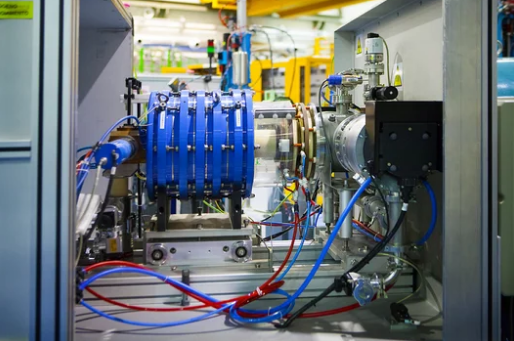At first glance, Magnetic Resonance Imaging (MRI) systems in hospitals and fusion reactors in energy laboratories appear to have little in common. One is designed to save lives through advanced medical imaging, while the other seeks to power the future by recreating the energy of the stars. Yet when examined closely, these technologies share a striking number of engineering parallels, especially in their reliance on superconducting magnets, cryogenics, and precise control of magnetic fields.
By exploring the overlaps between MRI machines and fusion reactors, we uncover a deeper truth: advances in one field often accelerate breakthroughs in the other.
The Power of Superconducting Magnets
MRI Magnets: Imaging Through Precision
MRI machines depend on superconducting magnets to align hydrogen protons in the human body. These protons respond to radiofrequency pulses, generating signals that can be transformed into detailed images of tissues and organs.
- Strength: Most clinical MRI scanners operate at 1.5–3 Tesla, while research machines can exceed 7 Tesla.
- Uniformity: The field must be incredibly stable and homogeneous to avoid image distortion.
- Cryogenics: Liquid helium keeps the magnets at superconducting temperatures close to absolute zero.
Fusion Magnets: Containing Plasma Like a Star
Fusion reactors, such as tokamaks and stellarators, require magnetic fields strong enough to contain plasma hotter than 100 million °C.
- Strength: Fusion magnets can exceed 20 Tesla—much stronger than MRI magnets.
- Scale: Coils weigh hundreds of tons, dwarfing their medical counterparts.
- Purpose: Instead of imaging, the magnets form invisible “cages” that confine plasma, preventing it from touching reactor walls.
Parallel: Both systems rely on superconducting magnets that must balance immense strength with unwavering precision.
Cryogenic Systems: Keeping Magnets Superconductive
Cooling in MRI
MRI machines use compact cryogenic systems to keep their magnets cooled with liquid helium. Efficiency is critical—modern MRI systems recycle helium to reduce cost and environmental impact.
Cooling in Fusion
Fusion reactors operate on a much larger scale but face the same challenge: superconductors only work at cryogenic temperatures. Projects like ITER use massive cryoplants to maintain stability in coils the size of buildings.
Parallel: Both MRI and fusion rely on cryogenic engineering to unlock the power of superconductivity, with improvements in one sector often feeding into the other.
Magnetic Precision: From Imaging to Plasma Control
Uniform Fields in MRI
In MRI, magnetic precision determines image clarity. Calibration techniques such as shimming ensure that the field is uniform across the body, reducing distortions in scans.
Stability in Fusion
In fusion, plasma turbulence threatens to destabilize confinement. Small fluctuations in magnetic fields can collapse a reaction. Researchers adapt precision strategies inspired by MRI calibration to monitor and stabilize plasma in real time.
Parallel: Both require fine-tuned magnetic control—MRI for diagnostic accuracy, fusion for plasma stability.
Advanced Superconductors: The HTS Revolution
High-Temperature Superconductors in MRI
The transition from conventional superconductors to high-temperature superconductors (HTS) is transforming MRI. HTS magnets allow smaller, cheaper, and more accessible machines.
High-Temperature Superconductors in Fusion
Fusion startups, such as Commonwealth Fusion Systems (CFS), are adopting HTS magnets to build compact, high-field tokamaks. These magnets may enable commercially viable fusion reactors much sooner than previously thought.
Parallel: HTS is the shared future of both industries, promising greater efficiency, reduced costs, and expanded applications.
Computational Modeling and Diagnostics
Imaging in MRI
MRI reconstruction relies on advanced computational algorithms to transform raw signals into clear, high-resolution images.
Plasma Modeling in Fusion
Fusion scientists use equally sophisticated modeling to predict plasma behavior, design magnetic fields, and prevent instabilities. AI and machine learning, already applied in MRI diagnostics, are now guiding plasma control strategies.
Parallel: Both rely on powerful computational tools to interpret complex data and refine performance in real time.
Case Studies of Cross-Influence
ITER – Building on MRI Magnet Science
The ITER project in France incorporates design lessons from MRI technology in its superconducting coils and cryogenic systems, proving how medical innovations influence energy megaprojects.
Compact MRI and Compact Fusion
As MRI systems become more compact through HTS technology, fusion researchers are applying the same principle—shrinking reactors without compromising performance.
Shared Expertise
Engineers specializing in superconductors, cryogenics, and magnet calibration often work across both industries, accelerating progress through shared knowledge.
Future Outlook: A Shared Technological Destiny
For Medicine
Advances in fusion magnet design will trickle back into healthcare, making MRI scanners more affordable and widely available in developing regions.
For Energy
MRI-inspired precision and stability may help solve the ultimate challenge of fusion: sustained plasma confinement. If successful, humanity could achieve virtually limitless clean energy.
For Society
The convergence of these technologies shows how cross-disciplinary innovation benefits everyone—healing patients in hospitals while simultaneously working to heal the planet through sustainable energy.
Conclusion: Parallel Paths Converging
MRI systems and fusion reactors may seem worlds apart, but they are united by the same engineering pillars: superconducting magnets, cryogenics, precision calibration, and advanced computation.
The parallels are more than academic. The knowledge gained in hospitals is influencing the laboratories building tomorrow’s power plants, while breakthroughs in energy research promise to reshape healthcare accessibility.
In the end, the magnet is the bridge—a symbol of how one technology can serve both human health and the survival of our planet.
Also Read :
